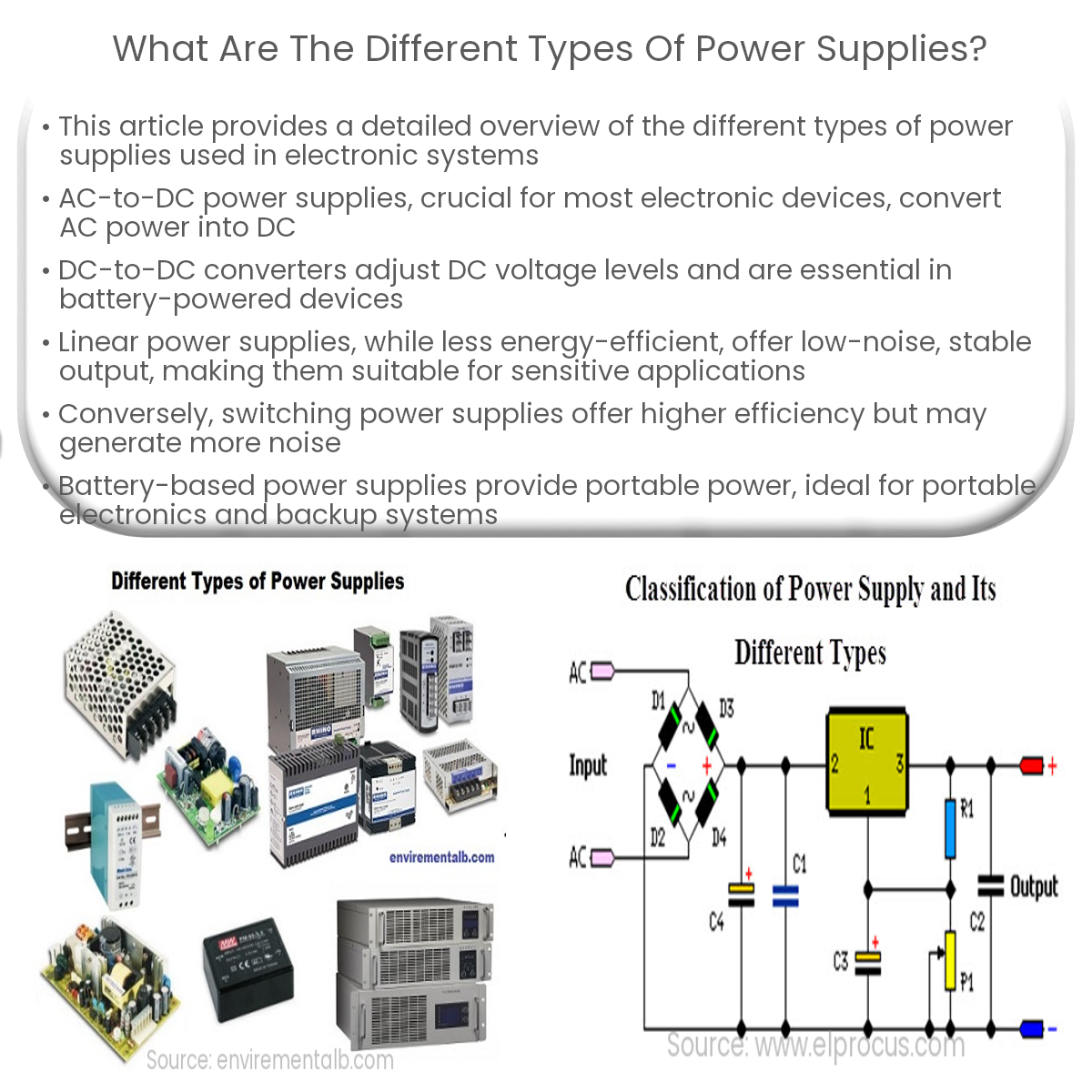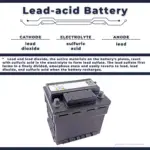Different types of power supplies include AC-to-DC, DC-to-DC converters, linear, switching, and battery-based, each catering to specific application needs.
Introduction to Different Types of Power Supplies
Power supplies are critical components in electronic devices, converting and regulating electrical energy to ensure proper operation. Various types of power supplies cater to the specific needs of different applications. This article will discuss the most common types of power supplies used in electronic systems.
AC-to-DC Power Supplies
AC-to-DC power supplies convert alternating current (AC) from the mains supply into the direct current (DC) required by most electronic devices. They typically include a transformer, rectifier, and voltage regulator to provide a stable and regulated DC output. Examples of AC-to-DC power supplies include wall adapters, desktop power supplies, and open-frame modules.
DC-to-DC Converters
DC-to-DC converters change one DC voltage level to another, either by stepping up (boost) or stepping down (buck) the input voltage. They are often used in battery-powered devices or systems where multiple voltage levels are required. Some common types of DC-to-DC converters include isolated and non-isolated converters, as well as step-up and step-down converters.
Linear Power Supplies
Linear power supplies use a transformer, rectifier, and linear regulator to provide a low-noise, stable output voltage. Although they offer excellent voltage regulation and low output noise, they are less energy-efficient compared to switching power supplies due to the heat generated by their linear voltage regulators. Linear power supplies are often used in audio equipment and other sensitive applications where low noise is critical.
Switching Power Supplies
Switching power supplies use high-frequency switching to convert input voltage, offering higher efficiency than linear power supplies. They employ pulse width modulation (PWM) and other techniques to regulate the output voltage, resulting in less heat generation and smaller form factors. However, switching power supplies can generate more noise, making them less suitable for noise-sensitive applications. Common applications include consumer electronics, computers, and telecommunications equipment.
Battery-based Power Supplies
Battery-based power supplies store electrical energy in chemical form and provide portable DC power to devices when a mains supply is unavailable. They can be rechargeable (e.g., lithium-ion, nickel-metal hydride) or non-rechargeable (e.g., alkaline, zinc-carbon). Battery-based power supplies are widely used in portable electronics, automotive systems, and emergency backup systems.
Conclusion
Understanding the different types of power supplies is crucial for selecting the most suitable option for a particular application. Factors such as efficiency, output voltage stability, noise levels, and size should be considered when choosing a power supply to ensure optimal performance and reliability in electronic systems.




